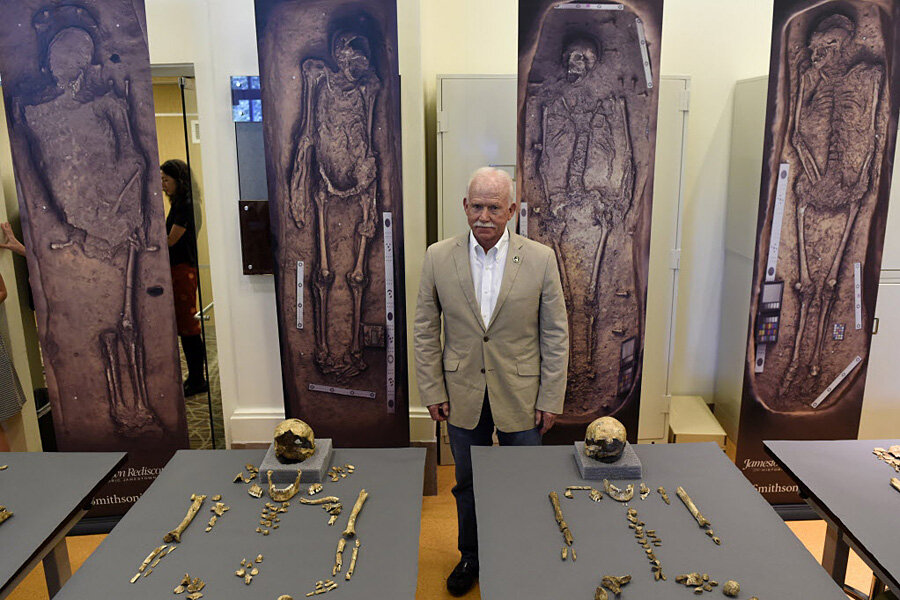Early colonial leaders found at Jamestown church, where Pocahontas was married
Loading...
Archaeologists have uncovered the remains of four prominent leaders in Jamestown – the first permanent English settlement in America, scientists announced Tuesday.
According to a news release by the Smithsonian, all four men were found buried within Jamestown’s historic 1608 church. Pocahontas and English settler John Rolf are thought to have been married at the church, which may have been the first Protestant church in the New World.
What do we know so far about these men and this startling discovery?
History.com says that three of the men were honored with prominent burials – a symbol of their status in the settlement. They include Rev. Robert Hunt, who is believed to be the first Anglican minister in the Americas; Sir Fernando Wainman, an English knight and cousin of the first governor of Virginia; and Capt. William West, a young uncle of the governor. The fourth man was Gabriel Archer, a prominent early leader in Jamestown and an outspoken critic of Capt. John Smith.
Scientists used archaeology, skeletal analyses, chemical testing, 3-D technology, and genealogical research to single out the four men from dozens of English colonists who died at Jamestown from 1608 through 1617, when the church fell into disrepair.
“This is an extraordinary discovery,” Dr. James Horn, president of Jamestown Rediscovery, told the Smithsonian. “Two of the men, Archer and Hunt, were with the first expedition, which established Jamestown in May 1607. And the other two, Wainman and West, arrived with Lord De La Warr and helped save the colony three years later. These men were among the first founders of English America.”
But one of the most surprising discoveries was made in the grave of Gabriel Archer. Archaeologists found a small silver box containing seven bone fragments and flask used to contain holy water – Catholic artifacts.
History.com asked: “What would a Catholic artifact, which predated the Protestant Reformation, be doing in Post-Reformation Jamestown, buried along with the community’s leaders?”
It’s difficult to know. In the mid-16th century King Henry VIII of England broke with the Church of Rome and established the Church of England in what some consider a personal move. The pope would not allow him to divorce Catherine of Aragon and marry Anne Boleyn (who he would later have beheaded). Many who “converted” to Protestantism maintained their Catholic beliefs, but did so in secret to avoid persecution.
According to the Washington Post, Mr. Archer was not known to be Catholic. But his parents in England had been “recusants,” Catholics who refused to attend the Protestant Anglican Church, as required by law after the Reformation.
Some researchers have wondered if Archer was a secret Catholic, but others say that the items may have been artifacts used in the early days of the Anglican Church’s founding in the New World. Either way, the discovery gives insight into the complexity of religious life in early Jamestown.
As Douglas Owsley, Smithsonian forensic anthropologist, told the Smithsonian, “The skeletons of these men will help fill in the stories of their lives and contribute to the existing knowledge about the early years at Jamestown.”






